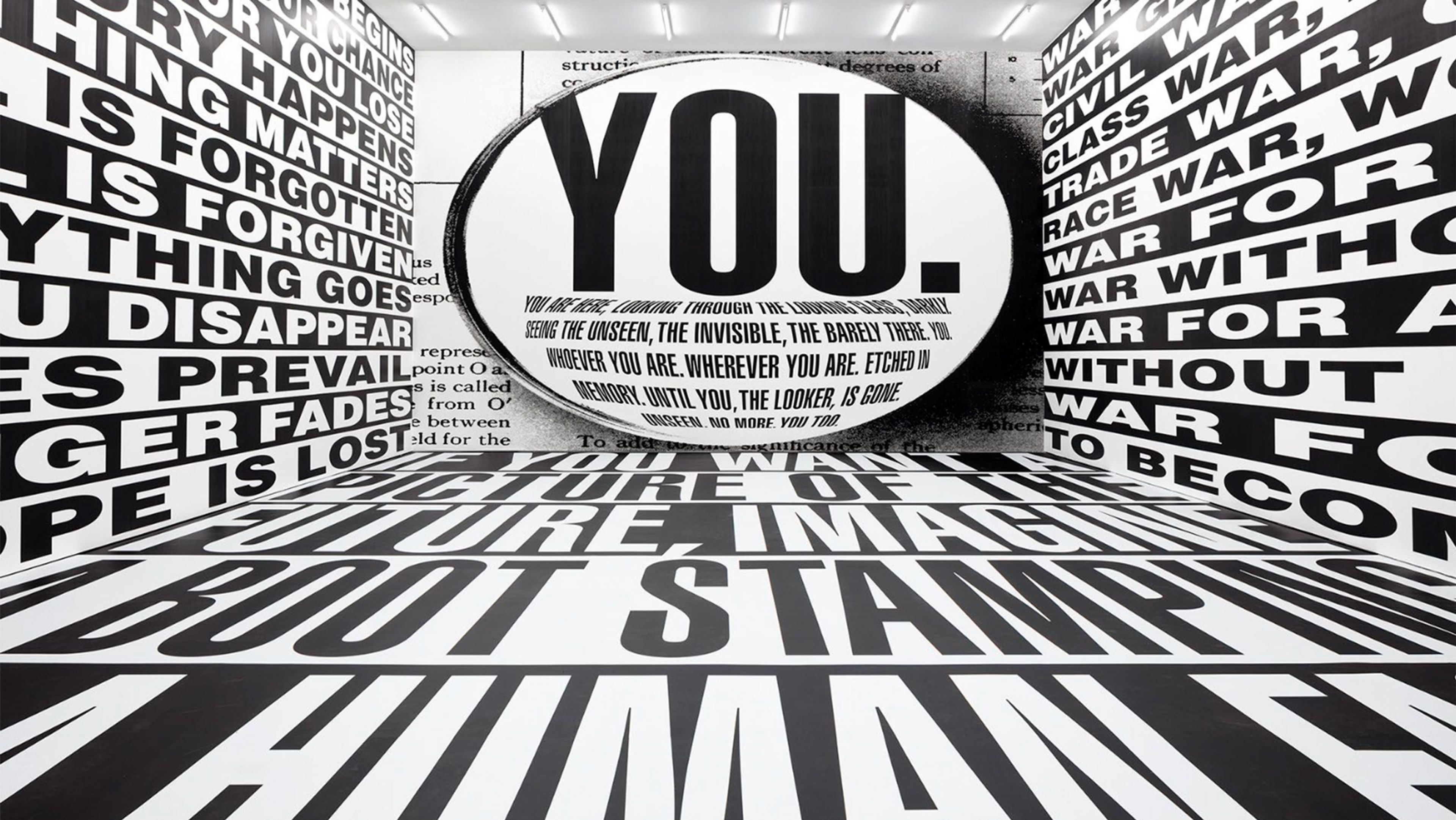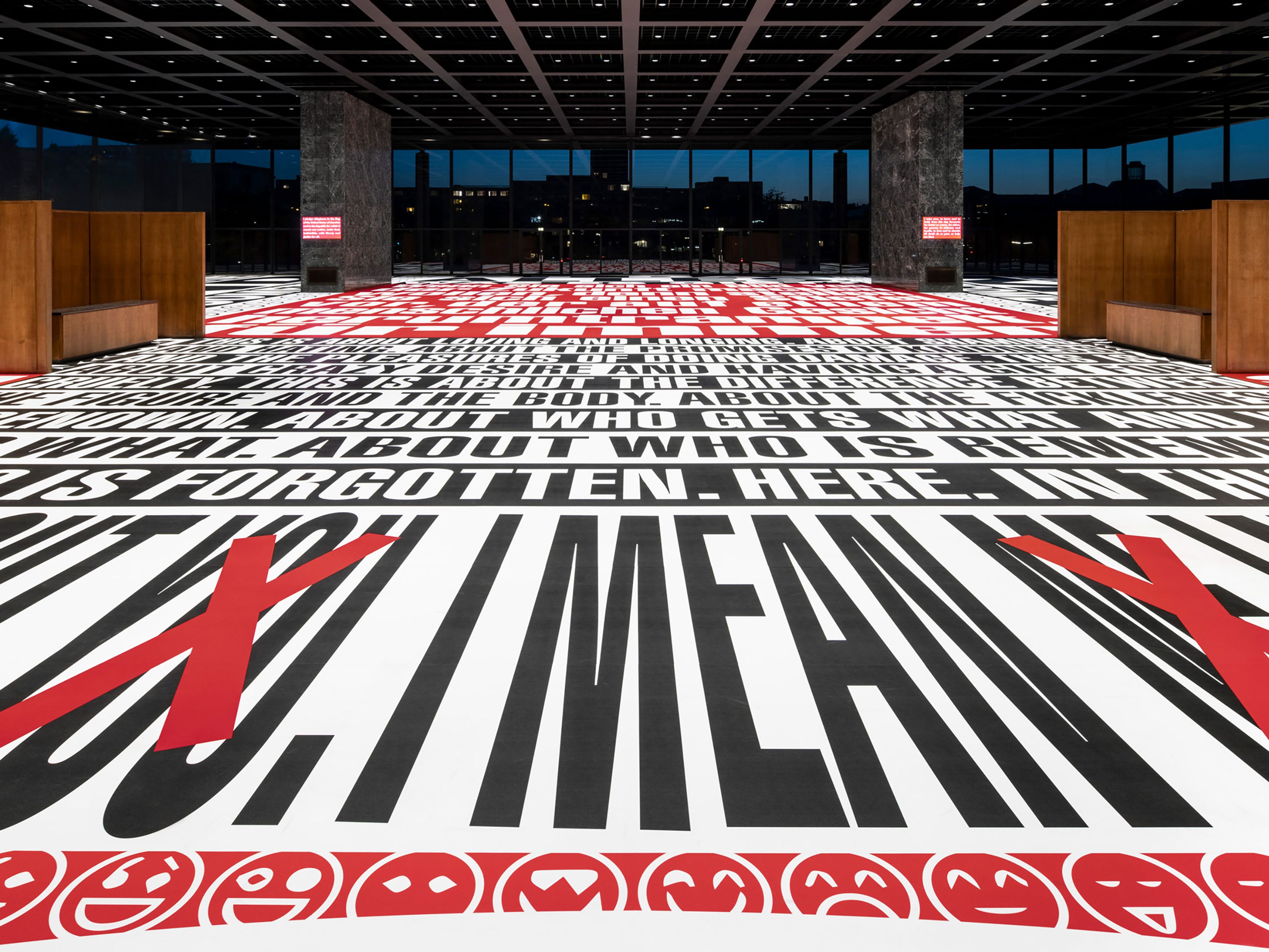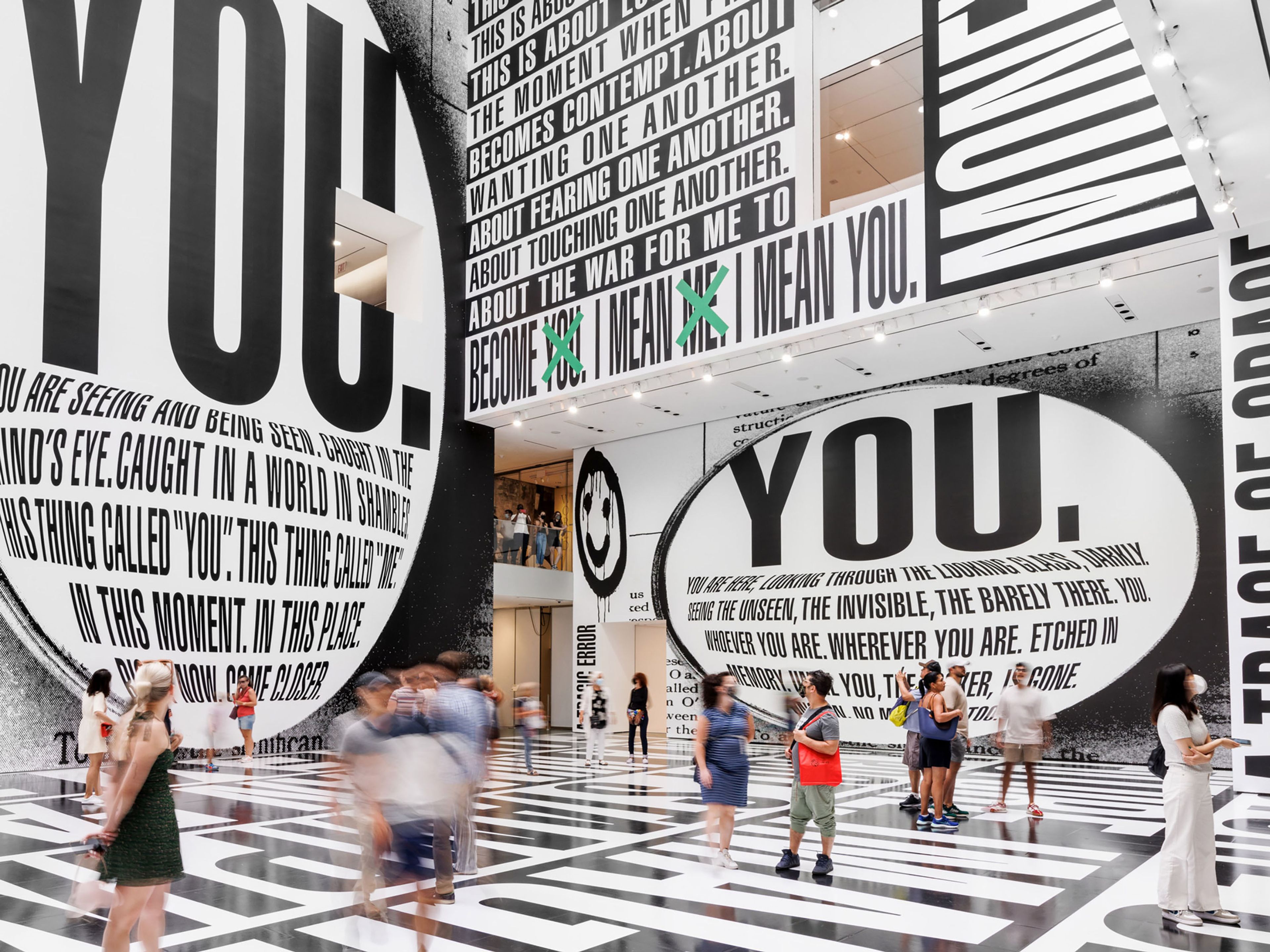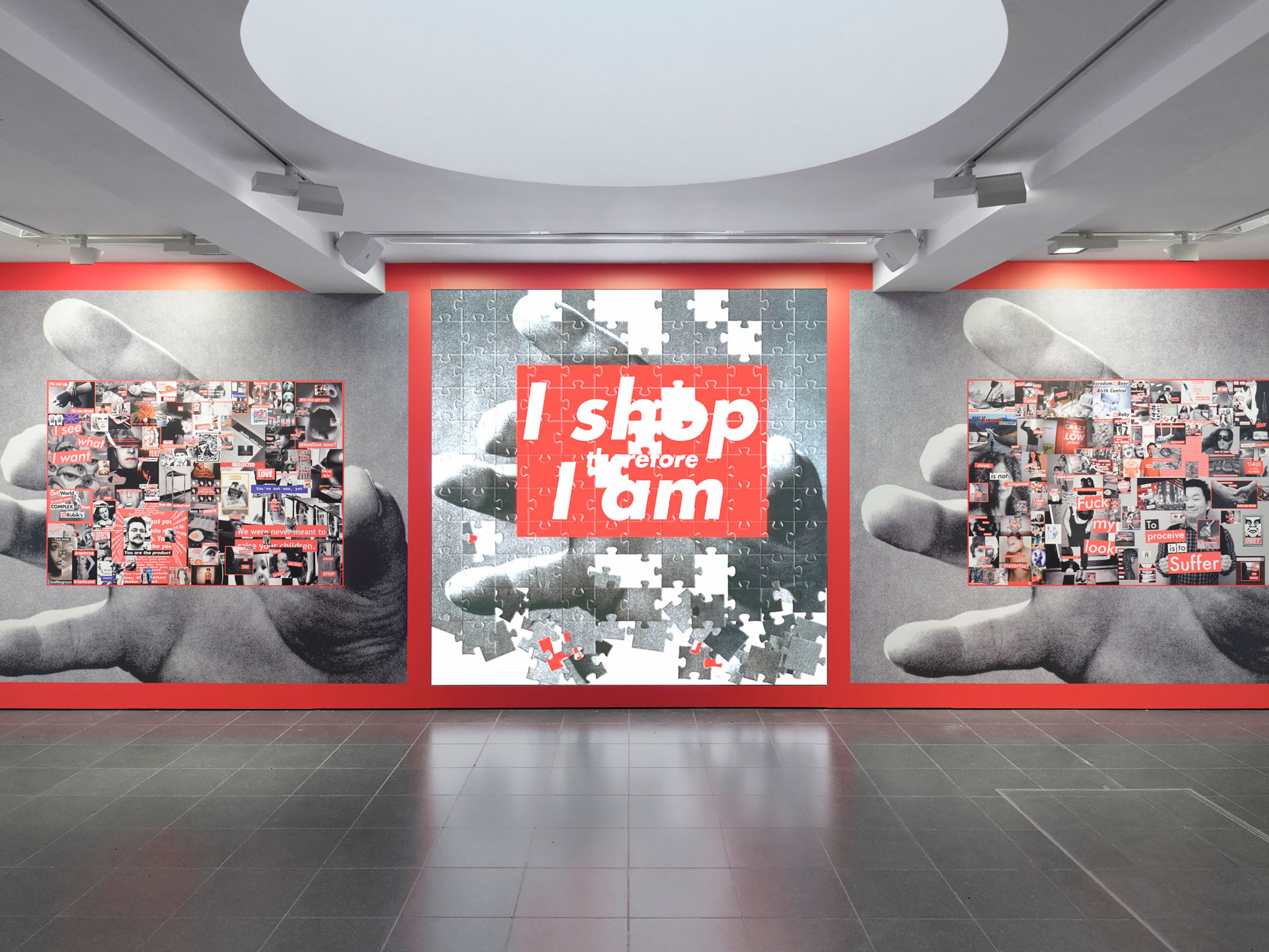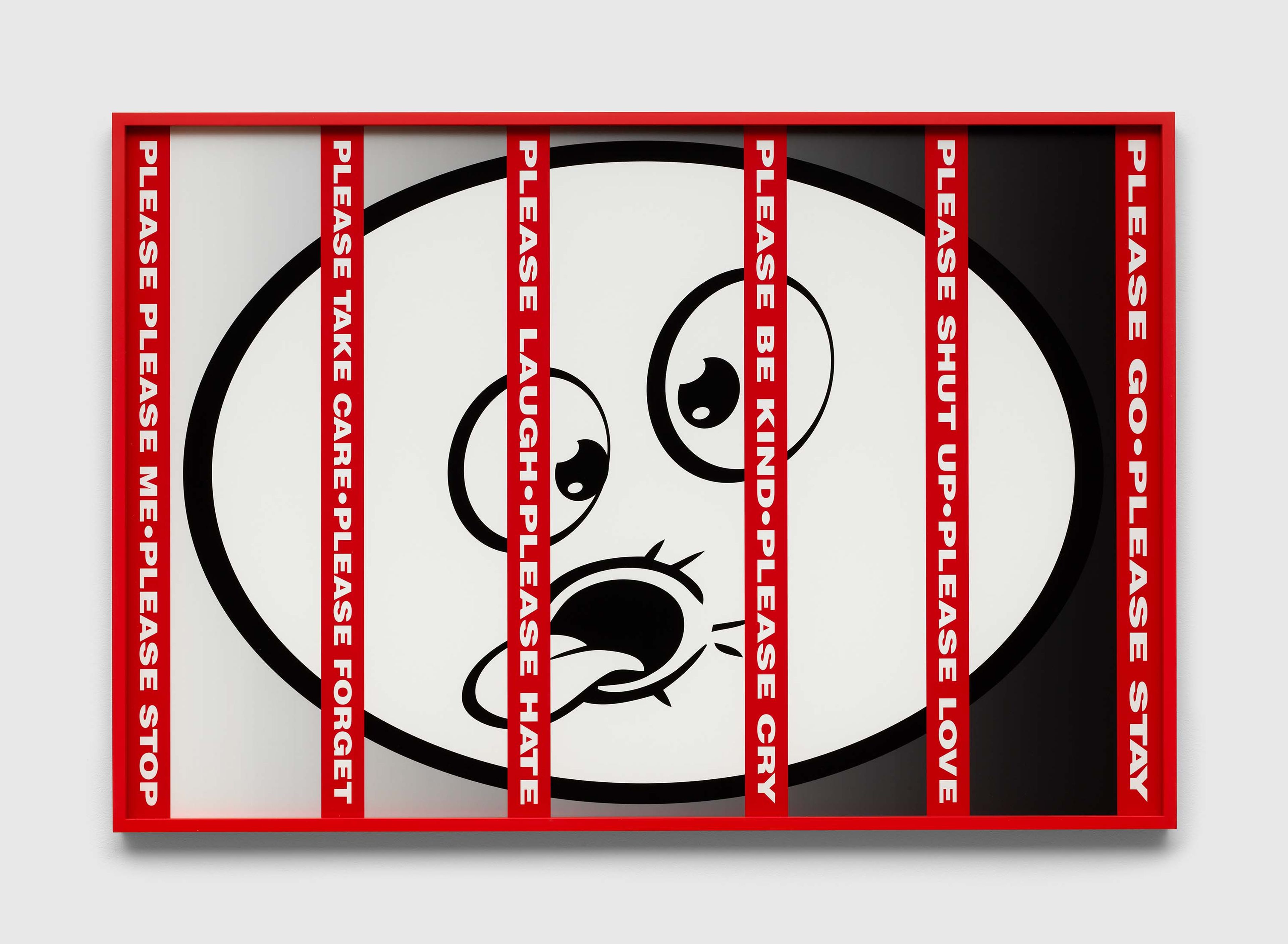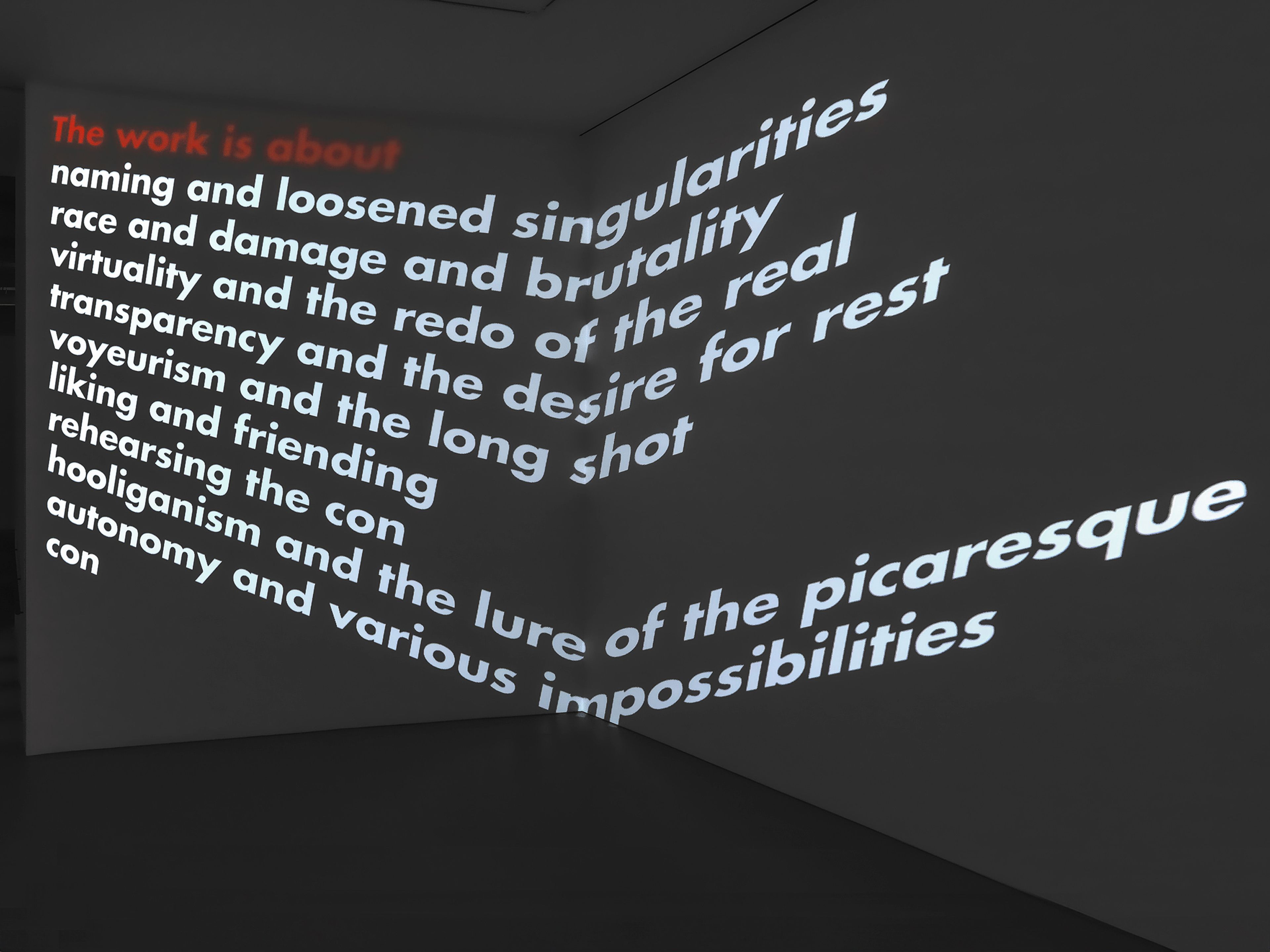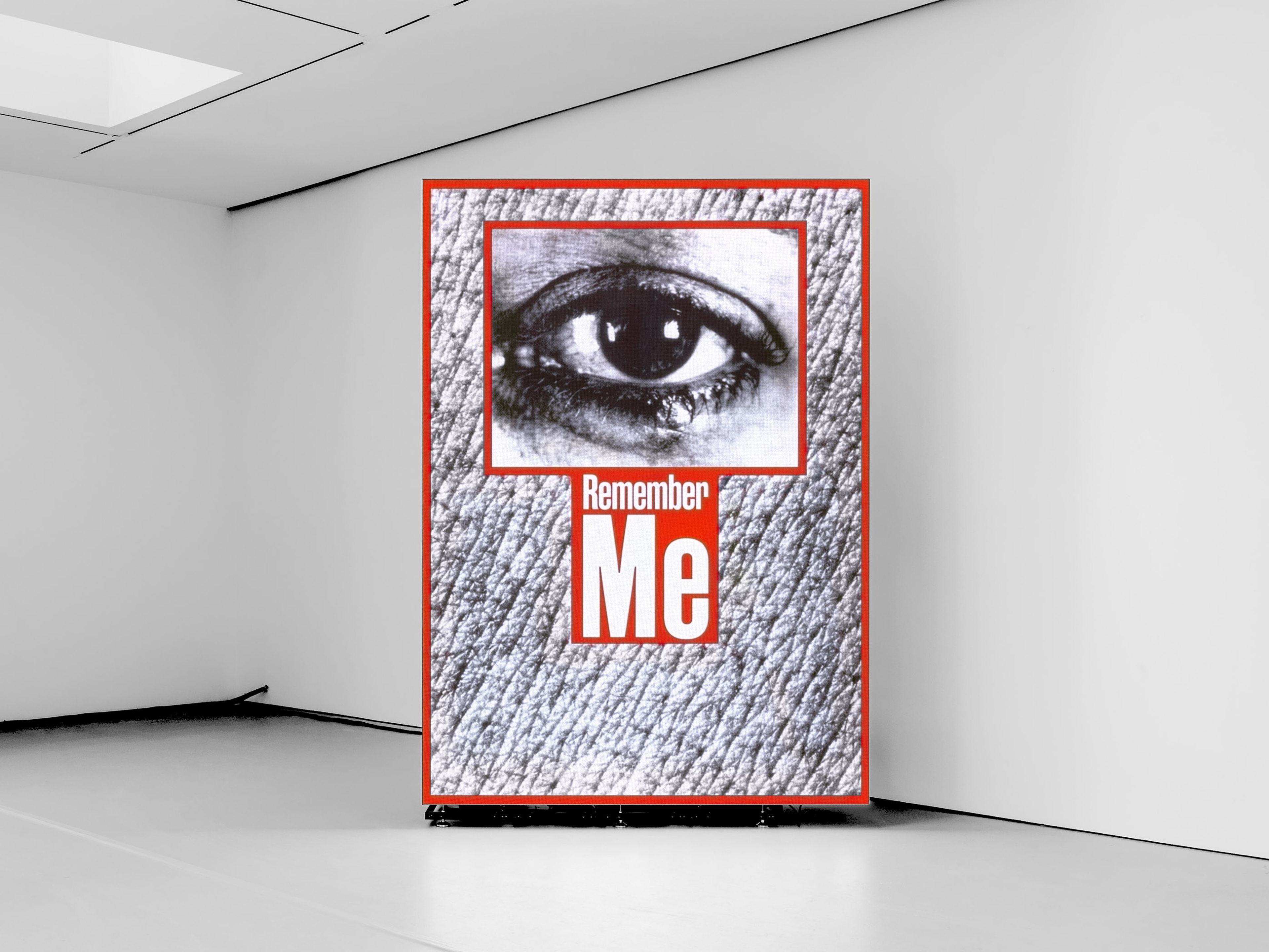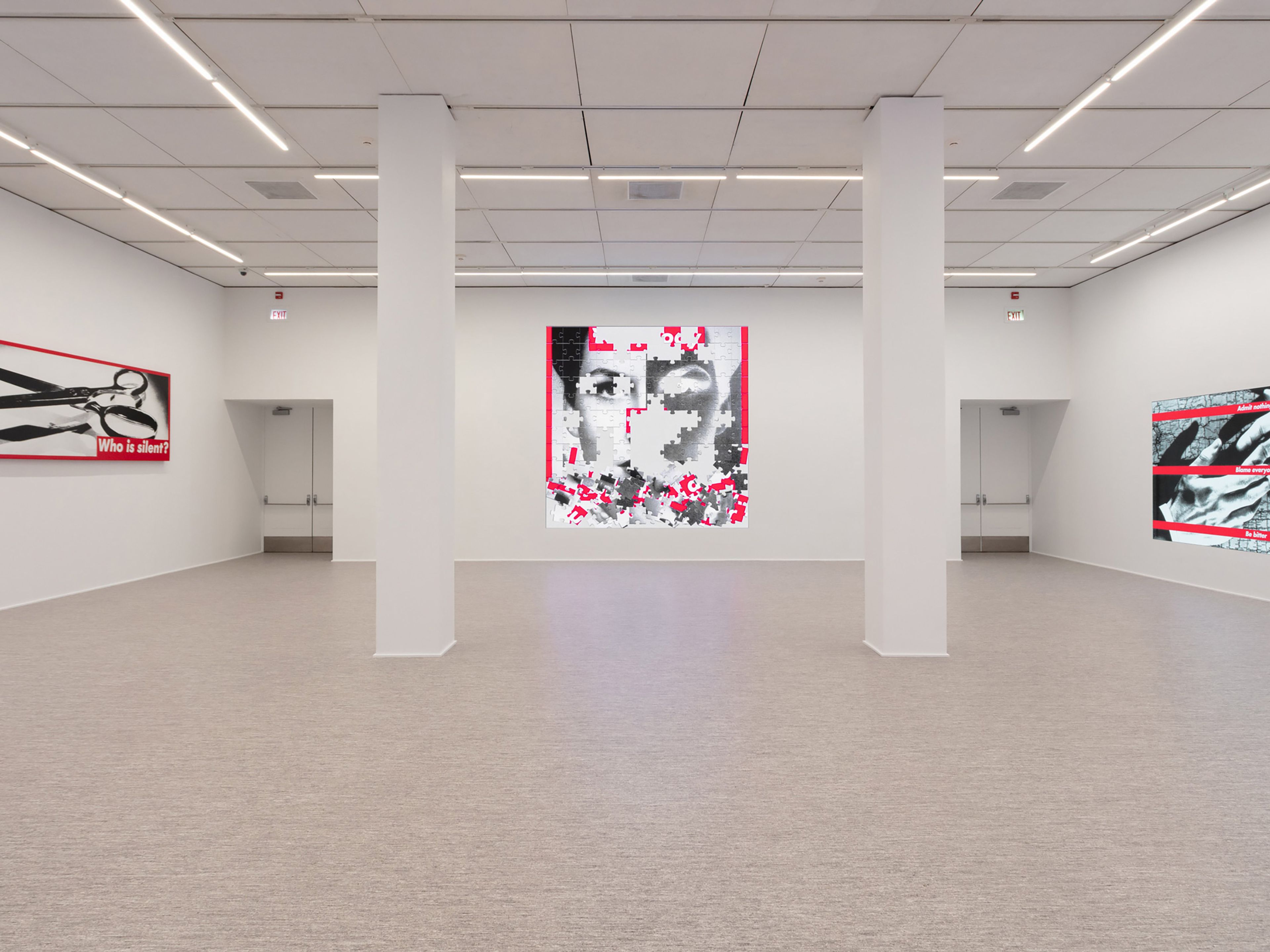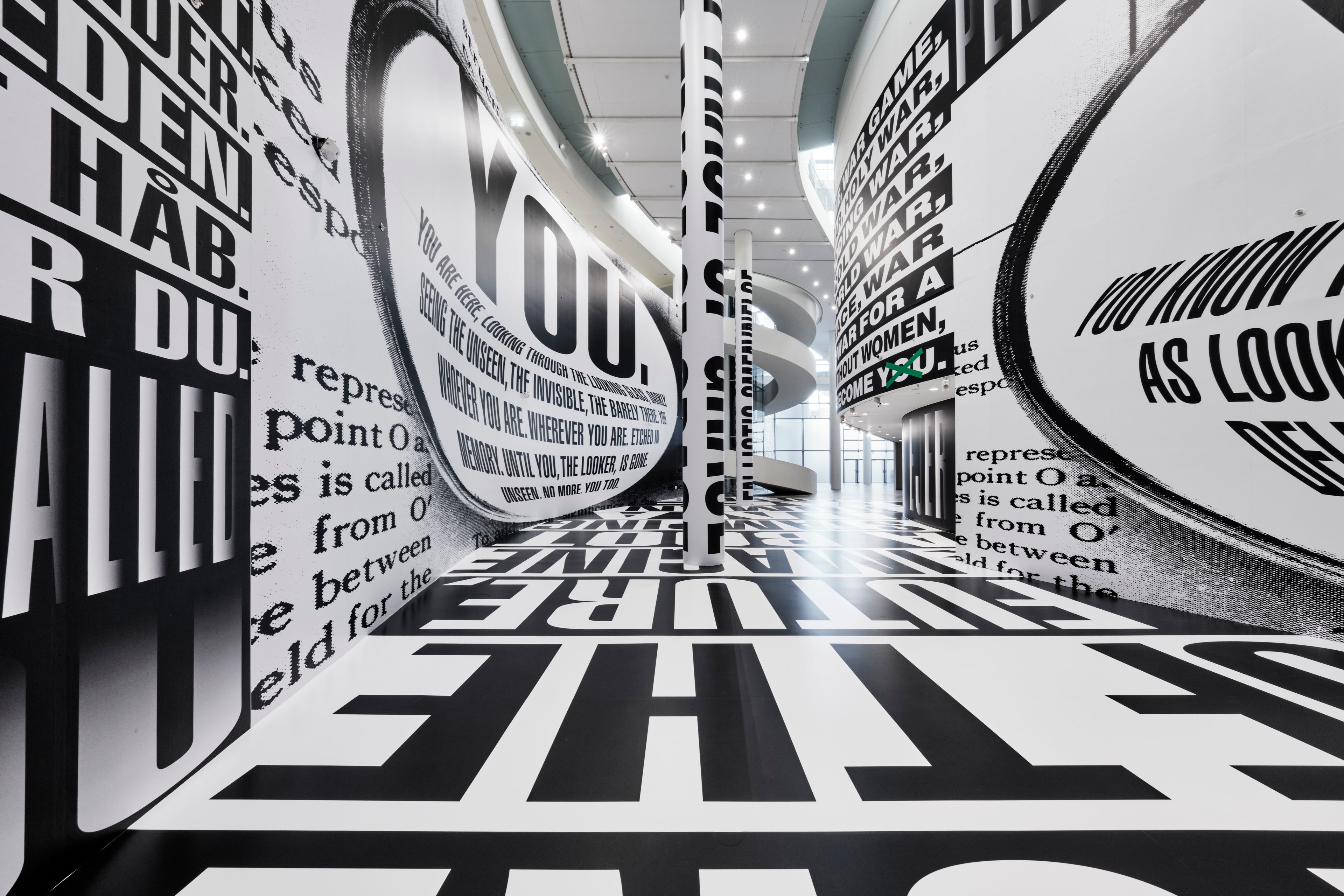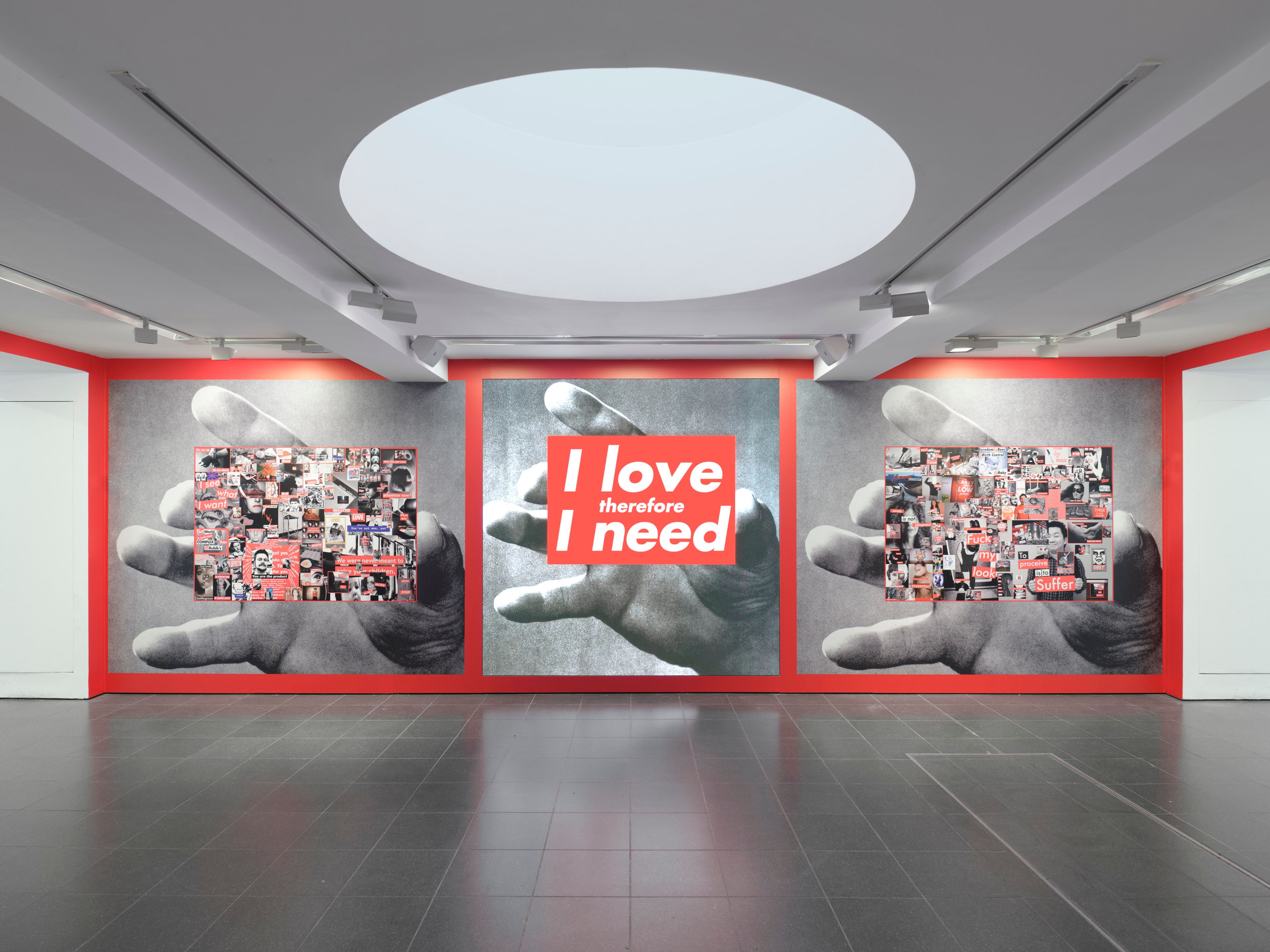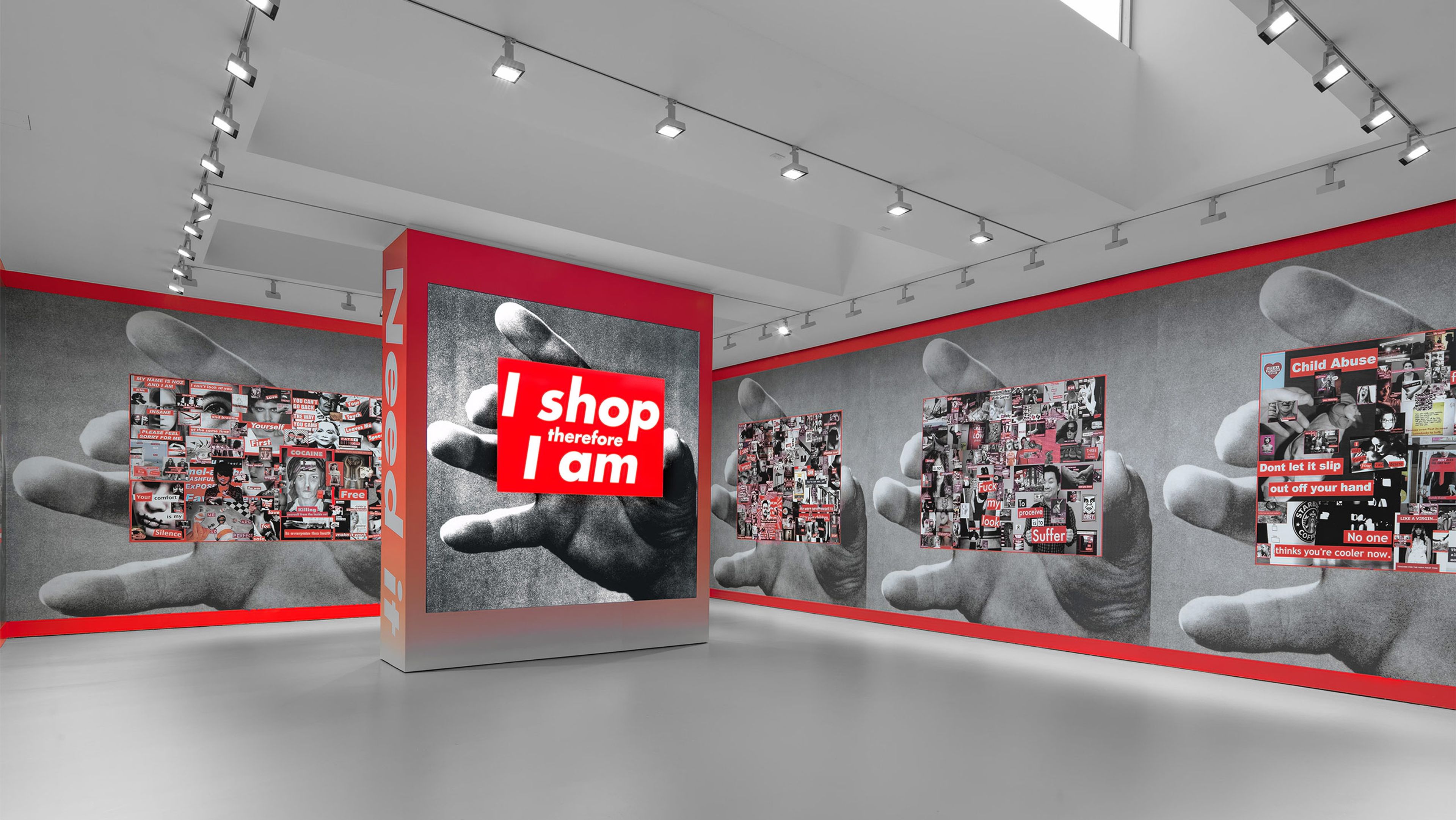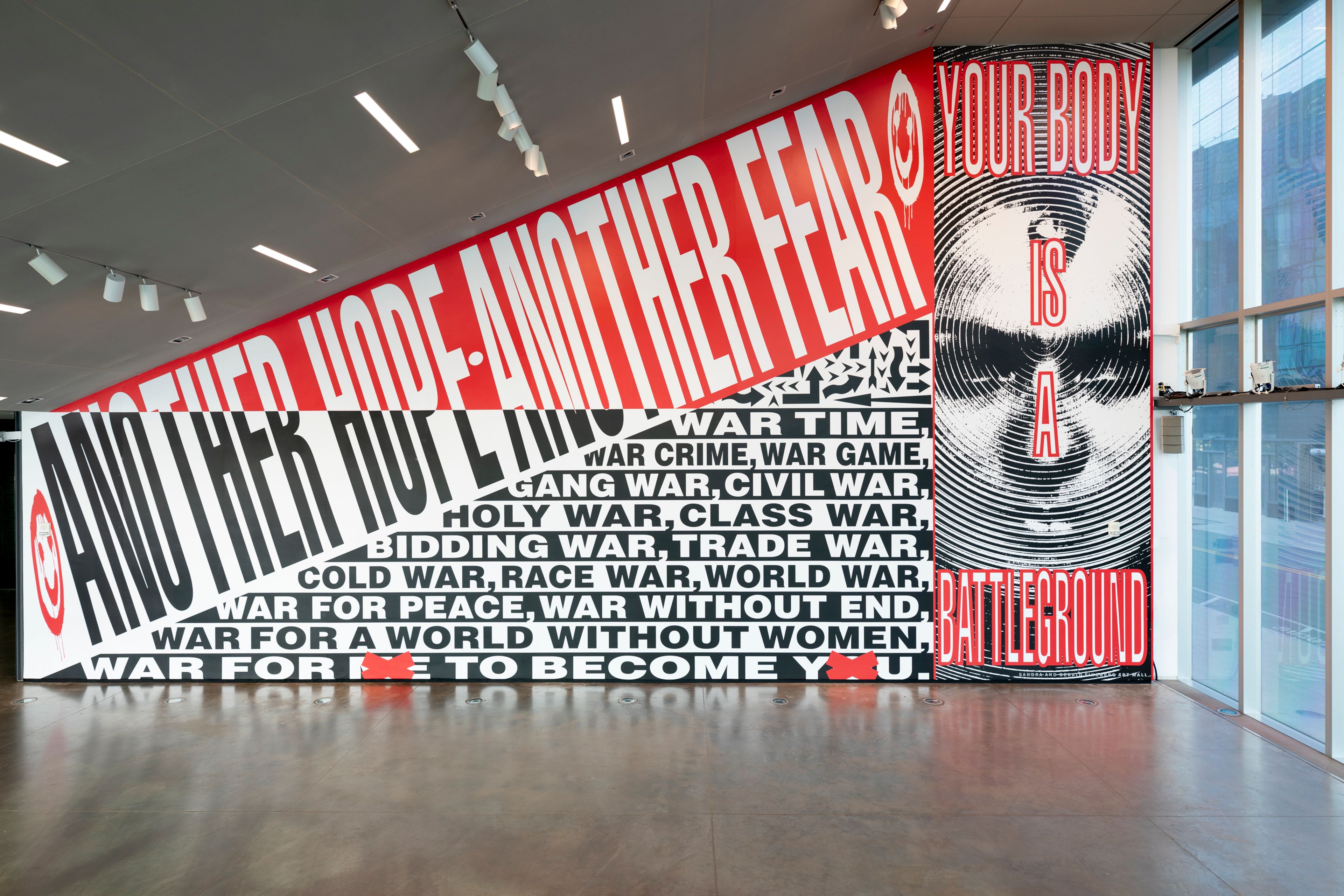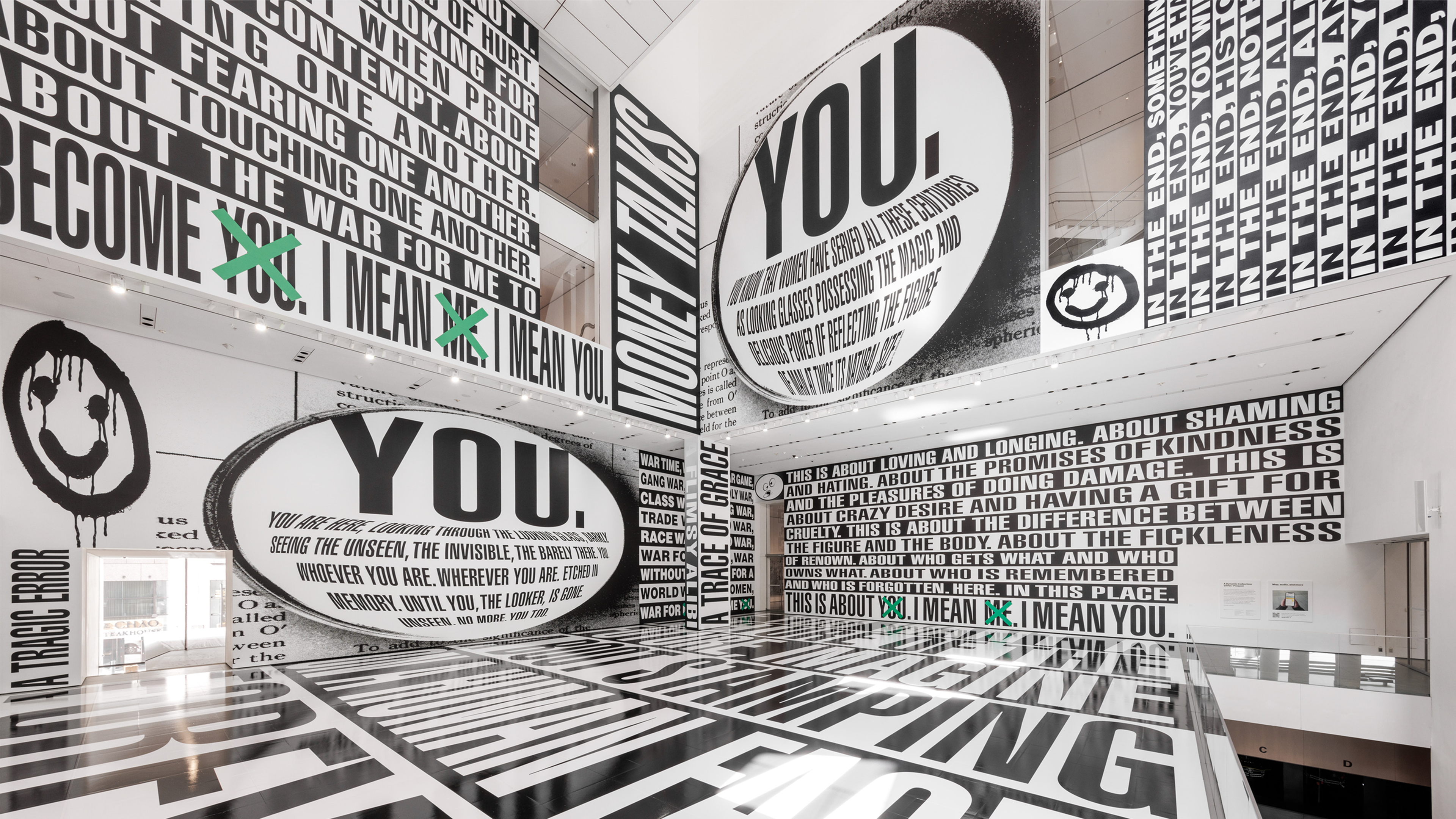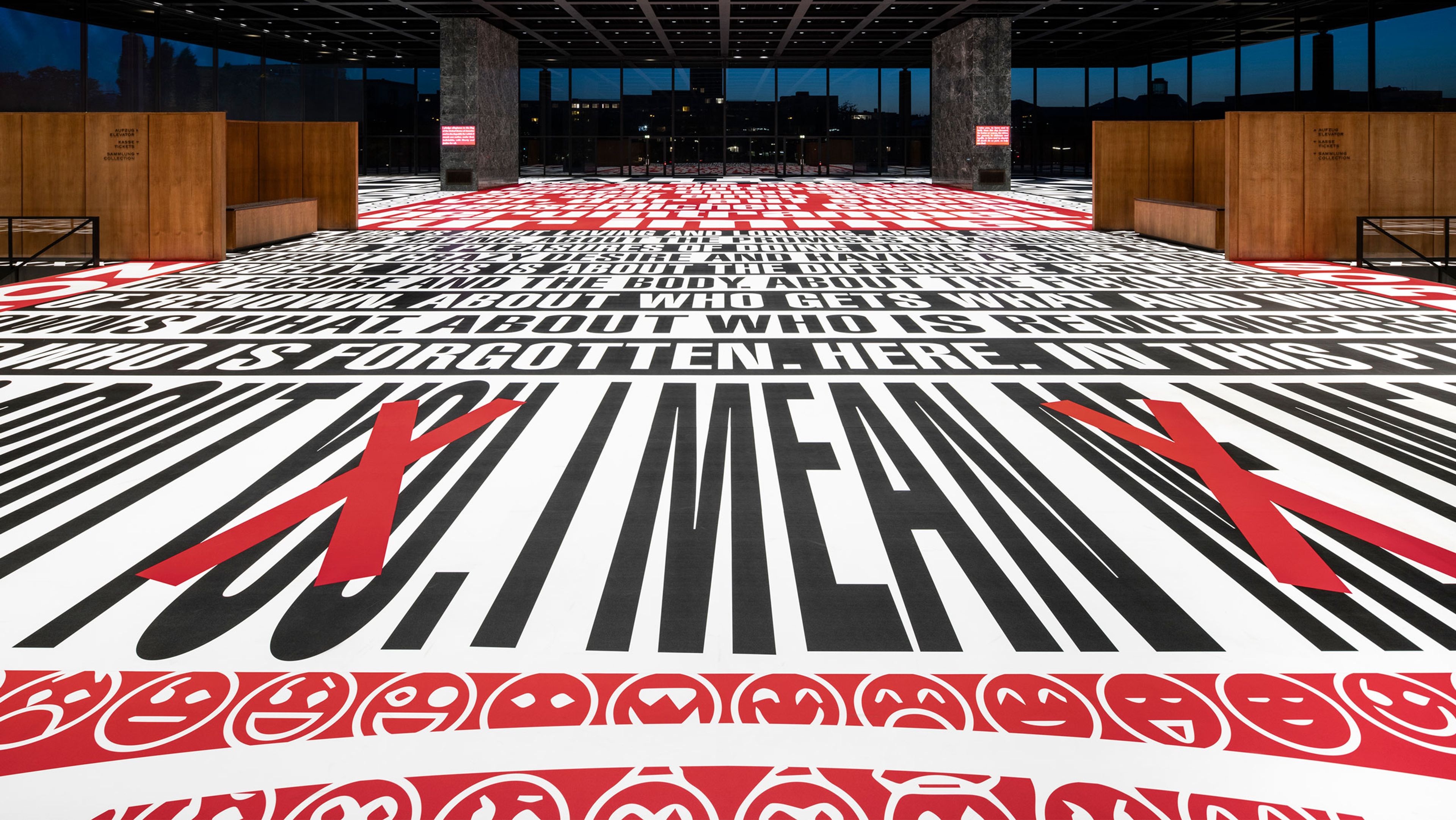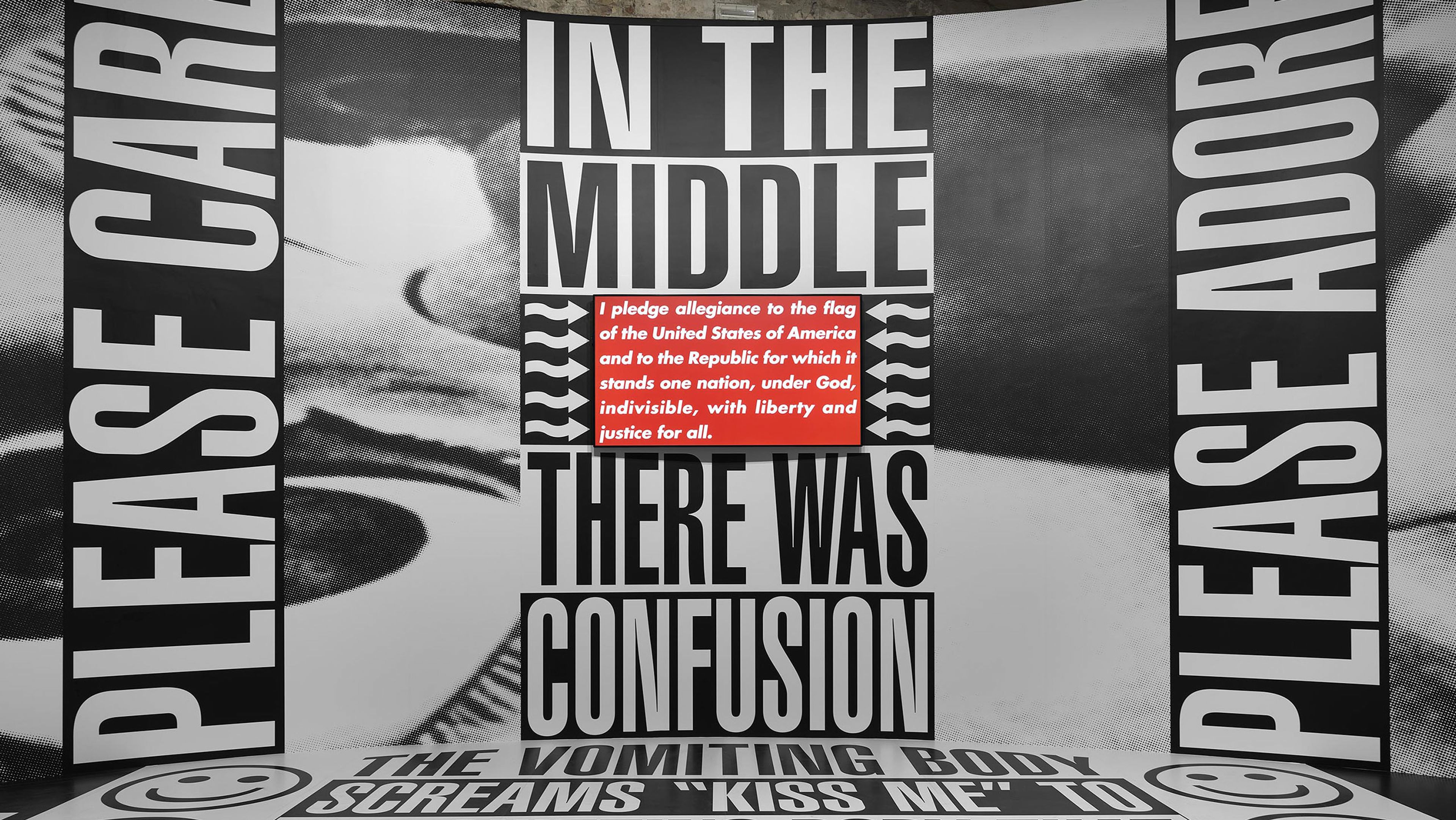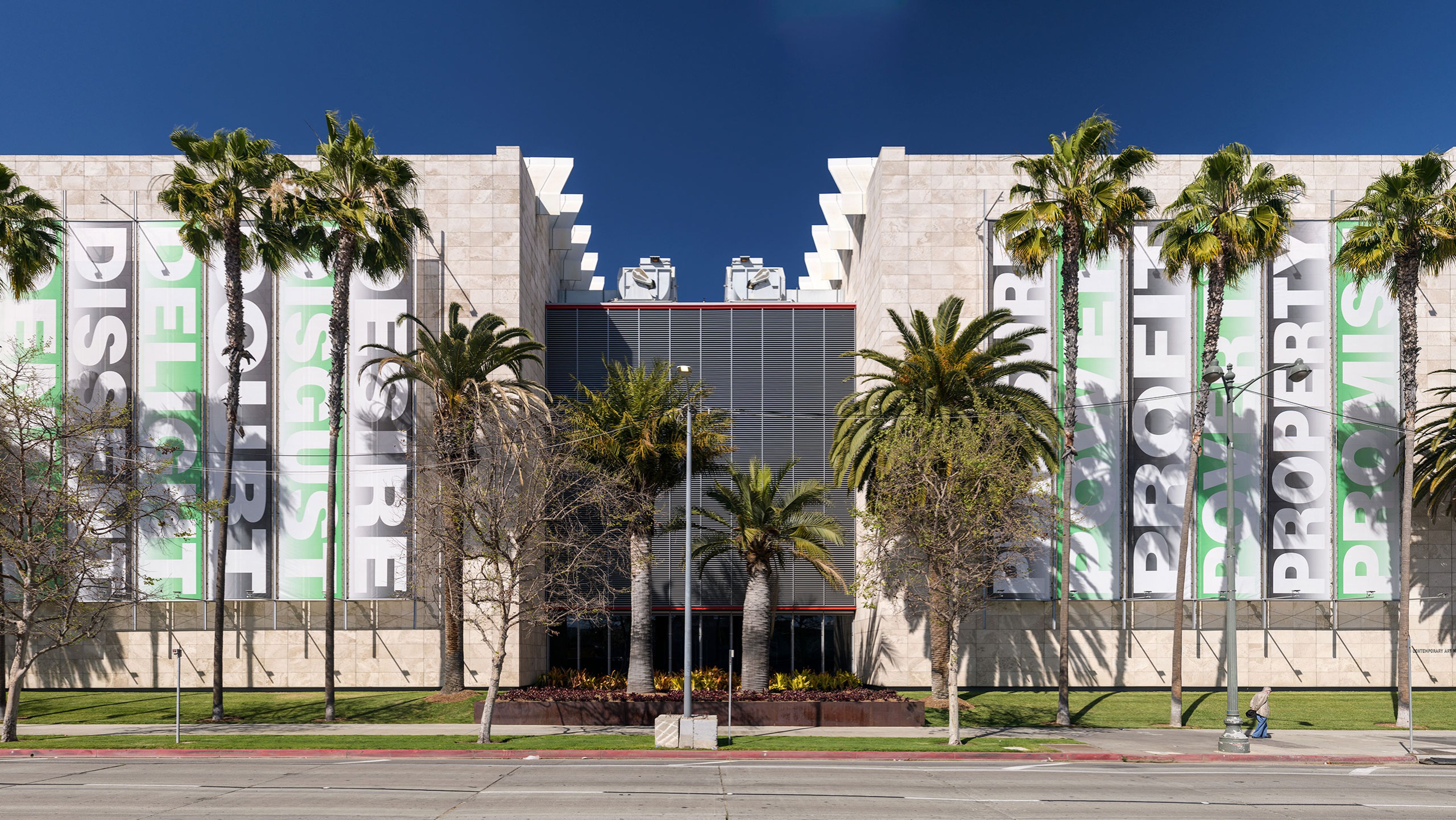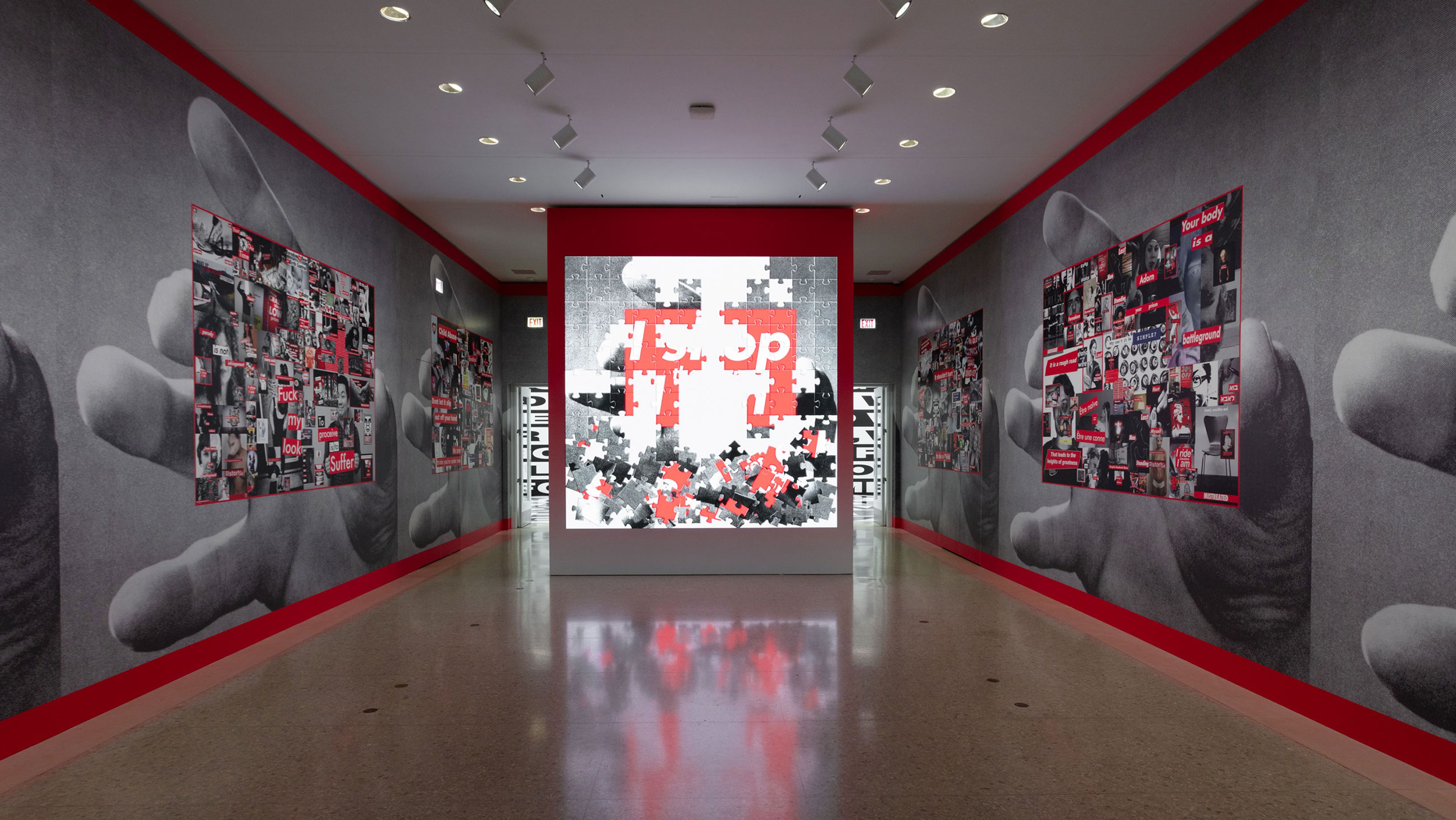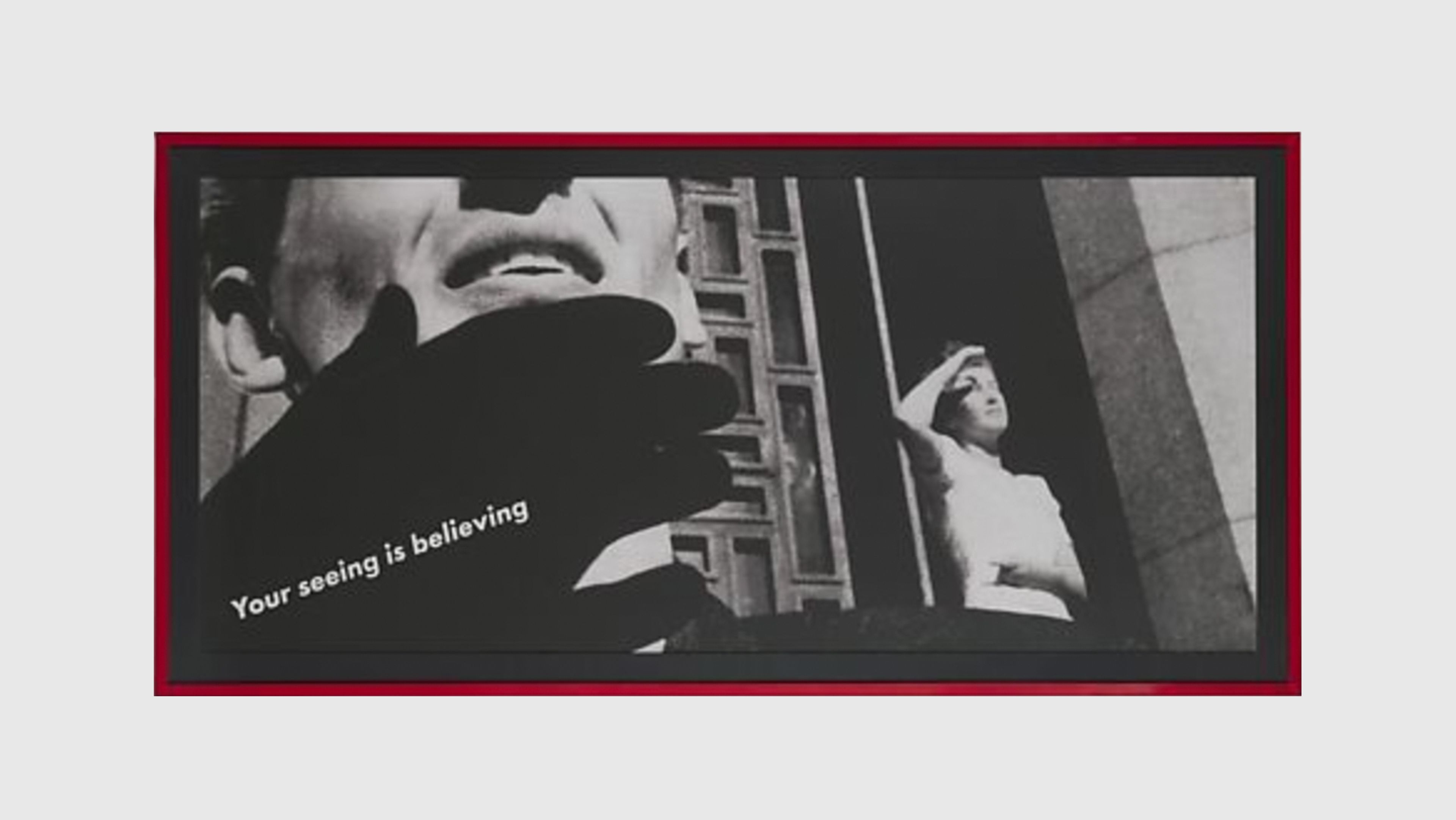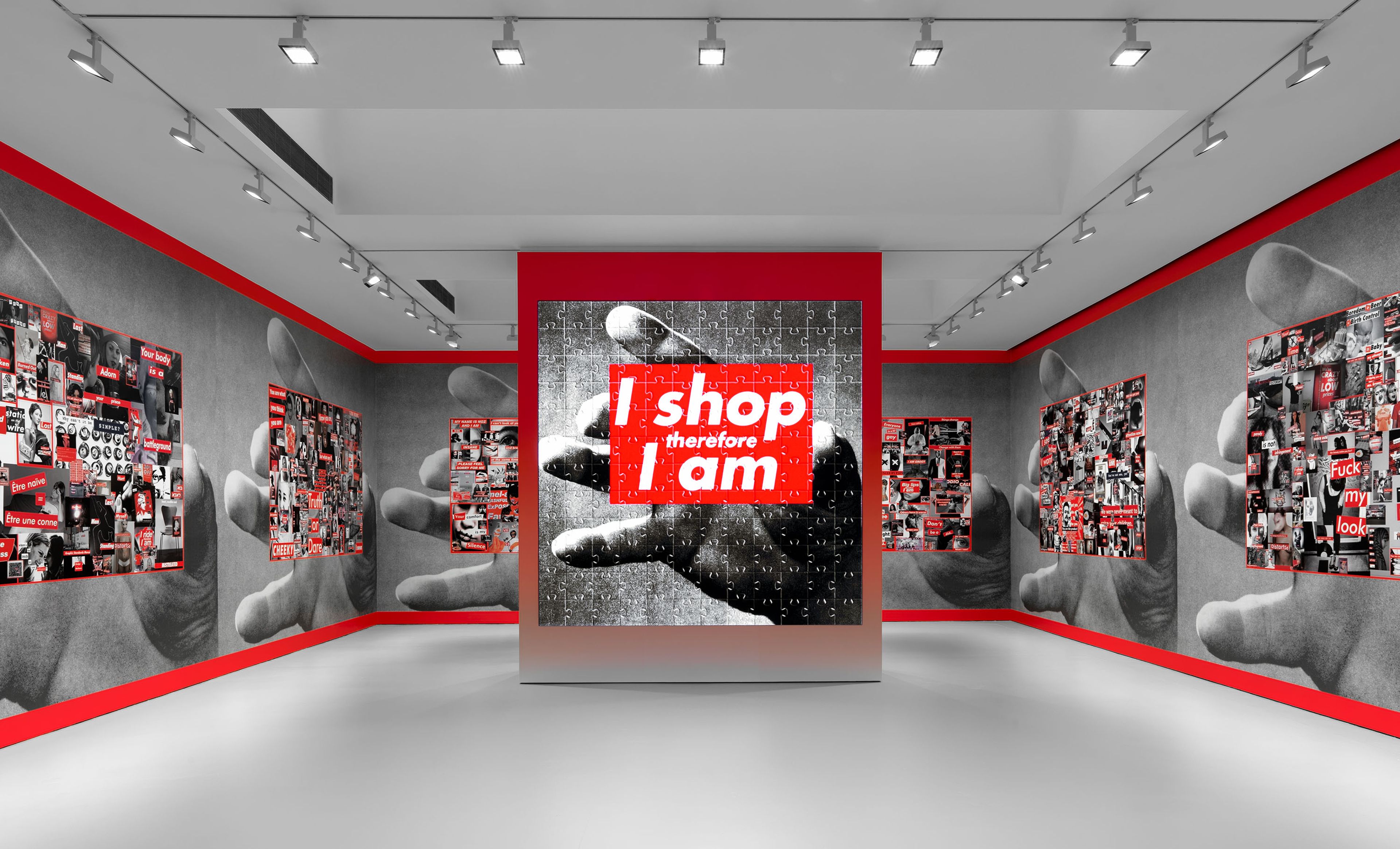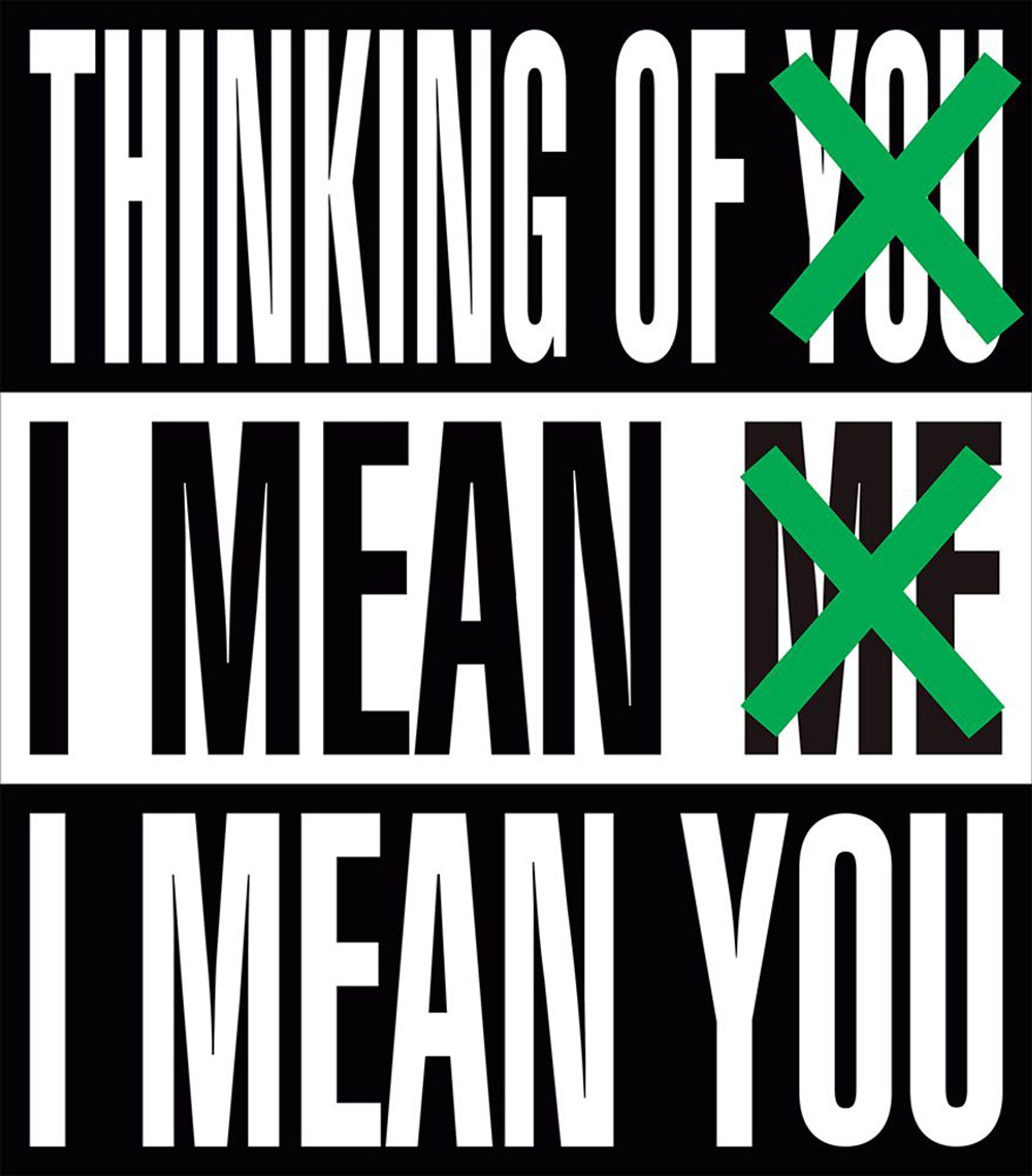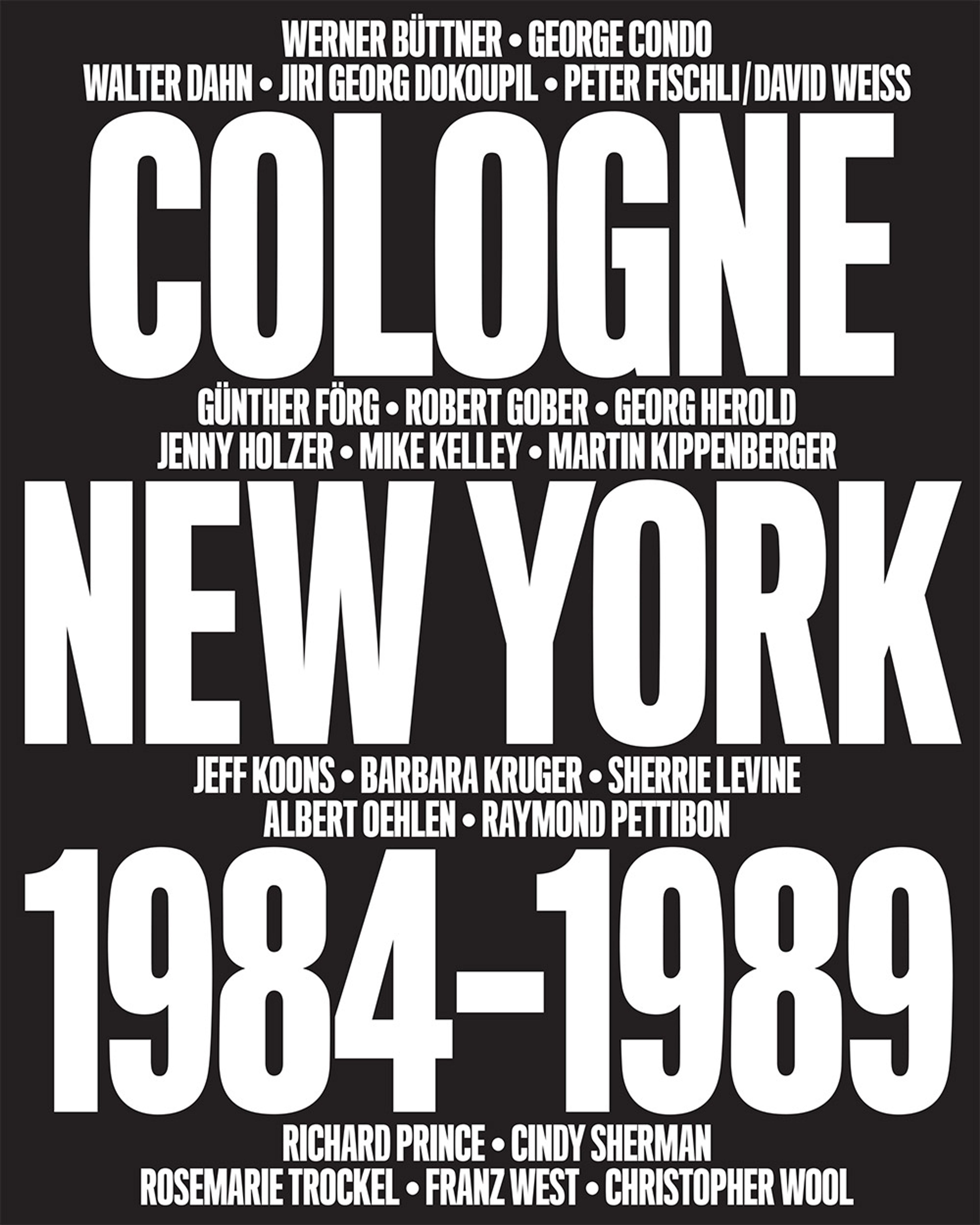Barbara Kruger
Since the late 1970s, Barbara Kruger (b. 1945) has powerfully and directly engaged with viewers through her distinctive visual language, utilizing images, text, and technology as tools of communication to reveal and question established power structures and social constructs. Her potent visuality and incisive observations on issues of value, gender, marginality, and the construction of consensus continue to be singularly recognizable and resonant today.
Learn MoreSurvey
Exhibitions

Explore Exhibitions
Artist News
Biography
Since the late 1970s, Barbara Kruger (b. 1945) has powerfully and directly engaged with viewers through her distinctive visual language, utilizing images, text, and technology as tools of communication to reveal and question established power structures and social constructs. Her potent visuality and incisive observations on issues of value, gender, marginality, and the construction of consensus continue to be singularly recognizable and resonant today. Kruger rose to prominence in the early 1980s, creating large-scale black-and-white photo-based images often framed in red and overlaid with the language of direct address. In the decades since, the artist has adapted her iconic visual language into a wide variety of formats, from lithographs, screenprints, and digital printing to monumental wall and floor based installations that engage the power of moving images via video and massive LED works.
In 1999–2000, The Museum of Contemporary Art, Los Angeles, organized a mid-career retrospective highlighting the artist’s work from 1978 to the present that traveled to the Whitney Museum of American Art, New York. Other significant solo exhibitions of Kruger’s work have been organized by the Palazzo delle Papesse - Centro Arte Contemporanea, Siena (2002); Skarstedt Gallery, New York (2003, 2009); Moderna Museet, Stockholm (2008–2011); Schirn Kunsthalle, Frankfurt (2010–2011); Pinakothek der Moderne, Munich (2011–2012); Kunsthaus Bregenz, Austria (2013–2014); Modern Art Oxford (2014); National Gallery of Art, Washington, DC (2016-2017); Amorepacific Museum of Art, Seoul (2019); and the Neue Nationalgalerie, Berlin (2022). Barbara Kruger: Thinking of You, I Mean Me, I Mean You was on view in 2021 at the Art Institute of Chicago, and later traveled to the Los Angeles County Museum of Art in 2022. Presented in conjunction with this major solo exhibition was a large-scale site-specific installation by the artist that was on view in the Marron Family Atrium of The Museum of Modern Art, New York in 2022. More recent solo presentations of Kruger's work have been held at Glenstone Museum, Potomac, Maryland (2023); Serpentine South, London (2024); ARoS Aarhus Kunstmuseum, Aarhus, Denmark (2024); and Guggenheim Museum Bilbao (2025).
Kruger has created a number of public installations, which have appeared in museums, municipal buildings, train stations, and parks, as well as on buses and billboards. Site-specific projects by the artist include installations for the Public Art Fund, New York (1989, 1991, 1997, and 2000); Whitney Museum of American Art, New York (1990 and 2010); The Los Angeles County Museum of Art (2008); Art Gallery of Ontario, Toronto (2010); Hirshhorn Museum and Sculpture Garden, Washington, DC (2012); The Hammer Museum, Los Angeles (2014); Vancouver Art Gallery (2016); Metro Bellas Artes, Mexico City (2016); The Museum of Contemporary Art, Los Angeles (2018 and 2020); Isabella Stewart Gardner Museum, Boston (2021); and the Institute of Contemporary Art, Boston (2022) among others.
In 2005, Kruger was awarded the Golden Lion for Lifetime Achievement at the Venice Biennale, where she was also commissioned to design the facade of Italy’s national pavilion. In 2019, the artist was awarded the Kaiserring (or “Emperor’s Ring”) prize from the city of Goslar, in Germany. An installation by the artist was presented at the 59th Venice Biennale in 2022.
In 2022, the artist's first presentation with the gallery, Barbara Kruger, spanned the gallery's three locations on West 19th Street in New York.
Work by Kruger is represented in international museum collections, including the Art Institute of Chicago; The Broad, Los Angeles; Fonds régional d’art contemporain (FRAC) de Bourgogne, Dijon; Institute of Contemporary Arts, London; Los Angeles County Museum of Art; The Metropolitan Museum of Art, New York; Musée d’art moderne et d’art contemporain, Nice, France; Museum of Contemporary Art, Chicago; Museum of Contemporary Art, Los Angeles; Museum of Fine Arts, Boston; Museum Ludwig, Cologne; The Museum of Modern Art, New York; National Gallery of Art, Washington, DC; Saint Louis Art Museum, Saint Louis; Seibu Museum of Art, Tokyo; Solomon R. Guggenheim, New York; Tate, United Kingdom; and the Whitney Museum of American Art, New York. Kruger lives and works in Los Angeles and New York.
Selected Press
Selected Titles

Request more information
